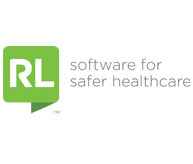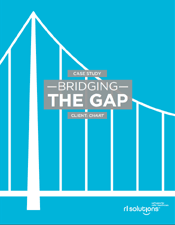Resource:
Bridging the Gap: Chart
Read how centralized event reorting helps Chart member-hospitals collaborate and improve patient safety.
THE CHALLENGE: Different methods of event tracking across hospitals
Although the CHART member-hospitals jointly share risk, risk management is not centrally managed and each hospital’s risk manager used a different method of reporting risk and patient safety events. Without a shared taxonomy and database, CHART could not compare events or share trend reports across its membership, or identify benchmarking opportunities. Additionally, the majority of CHART hospitals used a paperbased system for event reporting. This presented several problems such as completed paper forms being misplaced, difficulty reading handwriting on the forms and delays in departments submitting forms to risk managers (and often in large batches).
CHART recognized that it needed a more efficient, standardized system for reporting events across all of its member-hospitals. The risk managers across the CHART member-hospitals formed a taskforce to identify key requirements for a system-wide risk management process. One of the recommended solutions was incident management software that would help hospitals deliver more efficient and robust tracking, monitoring and analysis of events.
CHART decided to implement a shared electronic reporting system across all of its hospitals. After evaluating different systems, CHART selected RL Solutions’ risk management software due to its customization capabilities and ease-of-use.
THE SOLUTION: RL6:Risk provides standardized, electronic event reporting
CHART implemented RL Solutions’ risk management system at 33 member-hospitals in 2005, with an upgrade to RL6:Risk and additional hospitals implementing the system in 2010. The hospitals’ average amount of time spent creating trending and analysis reports dropped to just minutes with RL6.Also, the data reported in RL6 is now more reliable and robust, including valuable information such as good catches and near misses that previously weren’t tabulated.
Other features of RL6:Risk that benefitted CHART’s hospitals:
- Users can quickly create reports in RL6:Risk, eliminating CHART’s need for Crystal Reports.
- CHART tailored user access to allow only specific hospitals and staff to see different levels of data.
- The user-friendly system made it easy to train front-line staff on how to report events.
Since implementing RL6:Risk, CHART has created and monitored dynamic action plans to better manage risk and address essential safety issues. This has allowed the hospitals to streamline patient safety processes, and increase awareness of improvement opportunities.
THE RESULTS: CHART offers shared benchmarking and reporting across its member-hospitals
With the implementation of RL6:Risk across the majority of CHART hospitals, a standardized reporting taxonomy now exists that enables benchmarking among a set of community hospitals. Additionally, it helps CHART quickly identify problem areas, within individual hospitals and across the membership as a whole, and deploy the right resources to mitigate the identified risks.
For example, CHART’s Pennsylvania-area hospitals need to submit events to PA-PSRS, the state’s mandatory reporting program. Luckily, hospitals can directly submit a subset of those events through RL Solutions’ file interchange module, saving them valuable time.
Additionally, as a member of the Patient Safety Organization (PSO), CHART hospitals are able to select events and all accompanying follow-up information for submission to the PSO. This information is recognized as Patient Safety Work Product and is afforded a federal level of privilege and confidentiality. When new facilities join CHART, they are able to switch to using RL6:Risk quickly and benchmark their patient safety reporting against the other member-hospitals. This allows them to bridge the gap between their facility and other community hospitals, and benefit from CHART’s customized report templates and the shared experiences of the 50 other risk managers at CHART’s member-hospitals.

